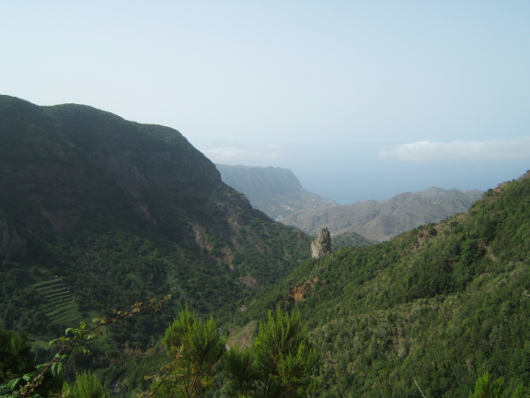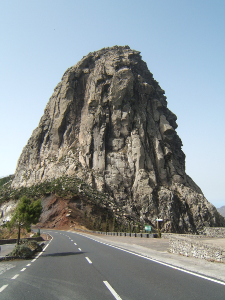Spain: La Gomera’s ancient forest in the clouds
02.09.14
La Gomera, in the centre of the Canary archipelago, off the north-west coast of Africa, boasts more indigenous palms than all the other Canary Islands put together, including La Palma, but it is the atmospheric and mysterious laurisilva cloud forest of the Garajonay National Park that has brought La Gomera to the attention of the plant conservation community.

Covering the central uplands of La Gomera, Garajonay is the largest and best preserved example of evergreen laurel forest, and is a remnant of the humid, subtropical forests that covered the Mediterranean basin 5 million years ago, before they were wiped out by climatic changes in continental Europe.
Garajonay is an exceptional landscape of volcanic origin, although there has been no volcanic activity here for 2 million years. From the central plateau at an altitude of 1000m, deep radial ravines and gullies have formed as a result of extensive erosion, and the landscape is overshadowed by impressive volcanic domes, known locally as Roques. Humidity from the Atlantic Ocean is stopped by the plateau, forming a ‘sea of clods’ effect, keeping the forest lush and green - a stark contrast to the rest of the island which is predominantly arid.

An imposing example of the Roques that tower above the landscape
The trunks of tree species in the cloud forest ecosystem, like the loro, Laurus azorica and the wax myrtle, Myrica faya, are covered in mosses and lichens and there is a damp understory of luxuriant ferns. The deep crevices are home to a diverse range of moisture-loving plant species, some of them endemic to the National Park. The numerous waterfalls and cascading streams that originate in the forest, provide much of the island’s water.
However, one of the biggest threats to La Gomera’s cloud forest is fire – the constant humidity makes people careless! In 1984, 20 people lost their lives in a forest fire, and a dramatic monument in memory of those who died is a constant reminder of the dangers of fire and the fragility of the forest. A more recent fire in 2012 didn’t claim any lives, but almost 20% of the forest was burned. The arid heathland surrounding the forest is made up of highly combustible shrubs like the tree heath, Erica arborea and the summer-deciduous Hawk’s beard, Sonchus hierrensis, and the park authorities are working hard to raise public awareness, with comprehensive interpretation in several languages, at major viewpoints, visitor centres and at the start of walking trails..
- La Gomera is a UNESCO World Heritage Site, and in 2012 was also declared a UNESCO Biosphere Reserve.